Bullmastiff
Bullmastiff
Bullmastiffen er en typisk familiehund. Den knytter seg ikke spesielt til en person, men legger sin elsk på hele familien og hele dens omgangskrets. At den får være blant de den er glad i, er mye viktigere enn hvor den er. Bullmastiffen er derfor en lett flyttbar hund bare den får være sammen med familien sin.
Bullmastiff er en muskuløs og kraftig bygget hund. Den skal gi inntrykk av stor styrke uten å virke klumpete. Hodet er viktig for helhetsinntrykket. Skallen og nakkens omkrets skal være lik mankehøyden. Nesepartiet skal være kort, snutens lengde skal være 1/3 av hele lengden, fra snutespiss til knollen. Sett forfra skal nesepartiet være bredt. Hunden skal ha en mørk maske som dekker nesepartiet og området rundt øynene. Ørene skal være små og V-formet, de skal ha en mørkere farge enn kroppen. Øynene skal være mørke eller nøttebrune, middels store og plassert lengre fra hverandre enn nesepartiets bredde. Mankehøyde for hannhunder er 63,5 - 68,5 cm. For tisper er mankehøyden 61 - 66 cm. Vekten for hannhunder er 50-59 kg, for tisper er vekten 41 - 50 kg. Pelsen skal være kort og tett. Alle nyanser av rød, fawn (gul) og brindle (tigret) er tillatt.
Det er viktig at hunden beveger seg uanstrengt og smidig til tross for sin imponerende størrelse og fysikk.
Bullmastiffen har aldri blitt brukt i flokk, derfor er miljøtrening blant dyr og andre ting veldig viktig under oppveksten og resten av livet. Den har alltid arbeidet alene sammen med skogvoktere, noe som gjør at den har utviklet en stor grad av selvstendighet.
Denne selvstendigheten gjør at hunden besitter en sterk selvtillit. Den er trygg på sin egen dømmekraft. Dette gir Bullmastiffen et ømt og kjærlig lynne, samtidig som den skal være psykisk sterk. I en familiesituasjon vil den lett tilpasse seg familiens rytme. Den er ikke så avhengig av faste rutiner som enkelte andre raser.
Den er blid og utadvendt mot barn og voksne. Vaktinstinktet skal ikke inntrenes. Det finnes der ved behov.
At bullmastiffen ikke er et typisk flokkdyr, gjør at den gjerne opptrer dominant overfor hunder av samme kjønn. En bullmastiff underkaster seg sjelden en annen hund, men det er sjelden den skader jevnbyrdige motstandere i en slåsskamp. Ofte slår den sin motstander i bakken med vekten og viser sin dominans på denne måten. Bullmastiffen er imidlertid en stor hund og det har vært tilfeller hvor motstanderen fysisk sett har vært mye mindre og resultatet har vært dødelig.
Bullmastiffen lærer fort, men går fort lei. Man må ta hensyn til dette ved å trene korte og varierte treningsøkter og heller trene oftere. Oppmuntring, motivering og ros er viktig for en bullmastiff. Man oppnår ikke gode resultater ved tvang. Man bør ikke ha noen problemer med å klare appellmerket etter å ha gjennomført et dressurkurs. For å trives med en hund av Bullmastiffens størrelse, kreves det man behersker hunden sin fullt ut. En 60 kilos hannhund uten dressur er ikke det minste sjarmerende. Dressur og god oppdragelse er derfor en selvfølge.
En Bullmastiff krever som alle store hunder daglig mosjon. Den elsker å gå tur, og er en trivelig turkamerat enten man går lange turer i skog og mark eller rusler i en park. Treningen skal bygges opp forsiktig og rolig. Sykling skal bare foregå i trav, kløv og tralle brukes med fornuft.
Pulk og dyp snø er uegnet på grunn av hundens tyngde. Hunden må selv bestemme tempoet uten å bli presset , da unngår man som oftest belastningsskader. Levealderen på en Bullmastiff varierer mellom 8 og 10 år, som på de fleste store hunder, men en godt trimmet hund kan hende lever lenger enn en sofagris - så ut i skog og mark.
Hofteleddsdysplasi og albueleddsartrose forekommer. Ca 50% av hundene er fri for HD. En del individer har nedsatt immunforsvar, hvilket kan føre til ulike former for infeksjoner. Kneleddene er utsatte pga rasens tyngde, Skader kan forebygges ved å holde hunden slank og i god trim hele livet. En Bullmastiff er som regel ikke ferdig utvokst før den er ca 3 år gammel.
Sin størrelse tatt i betraktning er Bullmastiffen en overraskende grei hund å ha i huset. Den tilpasser seg familiens rytme, og kan gjerne ligge å sove til langt på dag. En forutsetning for dette er selvfølgelig at den får dekket sitt mosjonsbehov.
Bullmastiffen trives i all salgs vær, med unntak av sterk varme, for eksempel inne i en bil sommertid. Sterk varme må unngås, da hunden lett kan bli overopphetet. Bullmastiffen holder seg rundt eieren på skogsturer og lignende. Den er ingen streifer, og har det ikke med å stikke av.
Bullmastiffen spiser ikke mer enn en vanlig stor hund, grunnkost bør være tørrfor for å få riktig sammensatt kosthold. I tillegg spiser den gjerne alt en vanlig familie har tilgjengelig. Pelsen er lettstelt. Det er tilstrekkelig å strigle hunden regelmessig med en hundebørste. Klørne må klippes ofte.
Bullmastiffen er en typisk familiehund. Den knytter seg ikke spesielt til en person, men legger sin elsk på hele familien og hele dens omgangskrets. At den får være blant de den er glad i, er mye viktigere enn hvor den er. Bullmastiffen er derfor en lett flyttbar hund bare den får være sammen med familien sin.
Vi har ikke mer enn ca 300 individer i Norge, noe som gjør at man på utstilling sjelden ser mer enn 5 - 10 hunder. Derimot avholdes det en gang i året en spesialutstilling for Bullmastiffer hvor det møter 50 - 75 hunder.
Rasen er lite brukt som brukshund, men det er ikke noe i veien for at den kan trenes til å bli en sådan, for eksempel førerhund eller redningshund.
Oppdrettet i Norge er lite, men stabilt. Norske hunder er av god kvalitet og det arbeides bevisst for å opprettholde kvalitetsnivået og for å forebygge sykdommer.
Norsk Bullmastiff Klubb ble stiftet i 1987 og er samarbeidende med Norsk Kennel Klub. Klubben arrangerer spesialutstilling har medlemsmøter og foredragskvelder. Klubben har sitt eget tidsskrift; Bull-shot, som kommer ut med 4 nummer hvert år. Link til FCIs rasestandard for Bullmastiff Sykdommer som kan forekomme hos Bullmastiff Ataxi:
Dette er en sykdom som rammer en del av lillehjernen. Arvegangen er ikke helt kjent, man antar at den er polygenetisk og recessiv. Valpene kan se helt normale ut ved leveringsalder, men utvikler i løpet av kort tid problemer med bla balansen og koordinasjon. Sykdommen er dødelig, valpene dør (eller må avlives) før de har fylt 6 måneder. Sykdommen er påvist i England på begynnelsen av 70-tallet og i Norge hadde vi 3 tilfeller på 80-tallet.
I Norge er alle kjente bærere av sykdommen samt deres foreldre og kullsøsken tatt ut av avl.
Wobler syndrom
Kjent arvelig sykdom hos blant annet hos dobermann og grand danois. Sykdommen gir en innsnevring av ryggmargskanalen i nakkeregionen. I Norge er 2 sikre tilfeller funnet i samme kull ved obduksjon på 90-tallet. I tillegg mistenkes det at en avliving skyldes det samme.
Hud
Som i mange andre raser er hudproblemene store hos Bullmastiff. I en helseundersøkelse foretatt på 300 hunder over en periode på 10 år hadde en vesentlig del av hundene problemer med våteksem, furunkulose og ørebetennelser. Tisper var også utsatt for livmorbetennelse.
Kreft
I samme undersøkelse ble det avdekket at 1 av 4 Bullmastiffer fikk kreft. Alle typer kreft er fremtredende, lymfer, blod og ben. Forekomsten av jurkreft er lavere enn hundepopulasjonene for øvrig. Hvorfor er bullmastiffen som den er? Hentet fra boka “The bullmastiff Manual” av Bill Walkey.
Kriteriene for bullmastiff skjedde ikke ved en tilfeldighet. Det var definitive grunner bak avgjørelsene de tidligere viltvokterne gjorde for å designe bullmastiffen slik den var. Viltvokterne brukte et dyr mot menn som ikke hadde noe å tape men deres liv, og alt og vinne ved å kjempe. Viltvokterne måtte lage en hund som kunne stå i mot all misshandel disse desperate, intelligente jegerne sto for- og alt hunden hadde å forsvare seg med var dens “naturlige” fysiske kropp. Mange av poengene er selvfølgelige, noen mer spesielle.
Hode og skalle
Skallen er bygget som en kvadratisk forsterket boks som tåler mye bank uten å miste alle sanser. Hvis hunden er skadet på den ene siden av hodet, vil bredden og det kvadratiske fortsatt gjøre at hunden fungerer på den andre siden. En smal snipete skalle kunne lett blitt smadret av et spark eller slag, mens den vide brede skallen motvirker dette. Øynene på hver sin side av det brede hodet virker som samme trygghet. Hvis et øye blir skadet kan fremdeles kan fremdeles den andre siden av hodet fungere, og hvis hunden blir skadet rettvinklet i ansiktet vil hodeflaten ta støtet, der en borzoy type hund ville blitt drept.
Snutepartiet former en parallell til hodet. Bredden og “avkuttet” utseende sørger for minimal skade og gir hunden størst mulig likevekt hvis den må ta motstanderens klubbe eller lignende. De vidspredte tennene og den flatesnuten i front tillater hunden å holde veldig hardt med dens sterke kinnmuskler og fremdeles puste godt. Forkortelsen av leppene sørger for en relativt tørr munn som ikke medfører at det sklir mens hunden holder.
Ørene er små for å forhindre at inntrengeren får fordelen av å ta tak i ørene på hunden, og holde fast der for å komme seg løs fra hundens grep. Lyse øyne har alltid vært en feil hos denne rasen. Hvis man ligger og venter på en inntrenger er det siste man trenger er for han og se månens refleksjon av din hunds øyne. De mørke øynene inngår i en integrert del av maskens effekt for å dele opp hundens kontur i mørket. Lyse øyne ville vise seg godt mot de mørke markeringene som omfatter bullmastiffens øyne.
Frampart
En bullmastiff er ikke en slik hund som forfølger sitt bytte og hopper på det som en schæfer ville gjort. Bullmastiffen er en “slå ned og hold fast” hund. For å slå ned må bullmastiffen bruke dens enorme brystkasse med stor bredde og dybde. For å oppnå dette trenger bullmastiffen dens brystkasse samt den tilhørende brede bestillingen og skuldermuskulatur. De korrekte proporsjonene mellom over- og underarm gir den rette likevekten og balanse når bullmastiffen slår ned inntrengeren.
Rygg og bakpart
Fram og bakpart jobber sammen som en. Bakparten forsyner kraften til å flytte hunden fra liggende stiling til en umiddelbar angrepsposisjon, den overleverer energi og fart til jobben fronten utfører ved å slå ned motstanderen. Alt dette blir forsynt gjennom den tilhørende overføringen av hundens rygg. For å koordinere frampart og bakpart til et effektivt arbeidsteam, trenger hunden en kort sterk rygg som ikke vil lide fra svakhet pga lengde eller stivhet fra korthet, men gi hunden frihet til å vri seg og snu rundt. Bakpart skal ha velutviklede underlår for å gi lov til rask reaksjon fra en liggende stilling.
Føtter
Føttene er beskrevet som godt hvelvede, velmuskuløse kattepoter. Hunden opererte ikke på vide åpne sletter, men heller inn og ut av busker og trær. For å utføre dette bra trengte hunden sterke føtter som kunne dreie vekten dens og skjære rundt trær og opp steinete grunn; i de mest varierte overflatene, så trengte den også sterke harde terdeputer.
Hale
Mange mennesker tenker på halen som en unødvendig ekstradel på hundens bakpart. Bullmastiffen trengte halen som en kontrebalanse når den utførte sine brå bevegelser rundt. En hunds kropp virker som hengebro og må bestandig holdes i balanse. Sammensetningen til bullmastiffen fremhever dette perfekt.
Pels
I den originale rolle har bullmastiffen brukt mange våte og ukomfortable timer liggende i gresset ventende. Det er selvklart at den ville trenge en værfast pels til denne jobben, ellers hadde den ikke vart lenge. Fra begynnelsen foretrakk viltvokterne den brindle varianten. En god brindle har en basisfarge (vanligvis rød eller fawn) med vertikale tigrete striper. Ganske ofte i dag vil mange uvitende fans referere til en hvilken som helst mørk farge på lysere bakgrunn som brindle, men dette er ikke riktig. Stripene på en brindle var like viktig for de tidligere skogvokterne og deres natthunder som stripene er for overlevelsen til zebraene på savannen i Afrika. Bullmastiffen måtte gli inn i omgivelsene og bakgrunnen for å gi vokteren og hunden hver fordel. Oppstilling av hunden foran dommeren En bullmastiff skal stå “fire kvadrat”. dette betyr at alle fire ben støtter opp kroppen som om de var bord-ben. Frambena bør være vertikale og plassert under skulderen, så at hunden godt viser sin brede brystkasse og støtter opp overkroppen fullt ut. Hvis du flytter frambena for langt fra vil hunden se ut som en gyngehest, og den vil også forskyve frampartens vekt bakover istedenfor over frambena, noe som forårsaker svaiing i ryggen. En sterk, rett overlinje er viktig. Dens bakben bør plasseres i en stilling som gir en rett overlinje, helst med vertikale haser. Posisjonen av bak potene vil avhenge av mengden av vinkling i knærne og lengden på ryggen. For mye vinkling vil ofte nødvendiggjøre at bak potene for å gi en rett overlinje at hunden blir lang i ryggen.
Hodet bør holdes opp på en måte så man viser fram hundens uttrykk, med ørene framover og en godt reist nakke. Denne siste formen kan fremskaffes ved at man drar opp halsbåndet samtidig som man presser ned på skulderen. Vær nøye med at halsbåndet er posisjonert under haken på en måte som ikke samler opp ekstra hals-hud og gir uttrykk av at hunden har “dobbelthake” Se eksempler på fin oppstilling på bildene på denne siden Invite As Friend.
RASEBESKRIVELSE FOR BULLMASTIFF
Opprinnelsesland/hjemland: Storbritannia.
Helhetsinntrykk: Kraftig bygget, symmetrisk, gir inntrykk av stor styrke uten å være klumpet. Sunn og aktiv, utholdende og pålitelig.
Adferd/temperament:
Temperamentsfull, våken og lojal.
Hode:
Bredt og dypt.
Skalle: Stor, sett fra alle hold skal den være kvadratisk. Har rynker når oppmerksom, men ikke når hunden er i ro. Skallens omkrets omtrent lik mankehøyden. Markert panneavsats.
Stopp: Utpreget.
Nesebrusk: Bred med godt åpne nesebor. Fra siden flat, ikke spiss eller bøyet oppover.
Snuteparti: Kort. Avstanden fra snutespiss til stopp omtrent 1/3 av hodets lengde. Bredt under øynene. Det skal ha omtrent samme bredde helt frem til snutespissen som er tvert avskåret og danner en rett vinkel med snutens overlinje og samtidig står i forhold til skallepartiet.
Lepper: Ikke hengende leppefold, må ikke nå nedenfor underkjevens profil.
Kjever/tenner: Underkjeven bred i hele sin lengde. Tangbitt foretrekkes; svakt underbitt tillatt, men ikke ønskelig. Store hjørnetenner plassert med stor innbyrdes avstand. Kraftige jevne tenner, godt plassert.
Kinn: Velutviklede.
Øyne: Mørke eller nøttebrune, middels store, plassert godt fra hverandre i snutepartiets bredde med en fure mellom øynene.
Ører: V-formede, små, foldet bakover. Høyt og bredt ansatt i høyde med nakkeknølen, det gir skallen det firkantede utseende som er så viktig. Dypere farge enn ellers på kroppen. Ørespissen i høyde med øynene når hunden er oppmerksom.
Hals: Godt buet, moderat lengde, meget muskuløs. Nesten samme omkrets som skallen.
Forlemmer:
Helhetsinntrykk: Sterke og rette med kraftig benstamme. Plassert med god innbyrdes avstand sett forfra.
Skulder: Skråstilt. Muskuløs og kraftig, men ikke tung.
Mellomhånd: Rett og sterk.
Poter: Godt hvelvede kattepoter, runde tær. Harde tredeputer. Mørke klør ønskelig.
Kropp:
Kompakt.
Rygg: Kort og rett, men ikke så kort at det hindrer hundens bevegelser.
Lend: Bred og muskuløs med dype flanker.
Bryst: Bredt og dypt, plassert godt nede mellom forbena.
Hale: Høyt ansatt, kraftig ved roten og avsmalnende. Rekker til haseleddet, bæres rett eller buet.
Baklemmer:
Helhetsinntrykk: Kraftige og muskuløse.
Underlår: Velutviklede, gir inntrykk av kraft og aktivitet uten å være klumpete.
Haser: Moderat vinklete.
Poter: Som forpotene.
Bevegelser: Gir inntrykk av kraft og målbevissthet. Under bevegelse skal for- eller bakben ikke nøste eller krysse. Overlinjen upåvirket av bakbenas kraftige fraspark og understreker et balansert og harmonisk bevegelsesmønster.
Pels:
Hårlag: Kort og hardt. Ligger tett inntil kroppen. Værmotstandig.
Farge: Alle nyanser av tigret, fawn eller rød. Ren og klar farge. Liten hvit brystflekk tillatt. Ytterligere hvite tegninger uønsket. Sort maske vesentlig, som blir gradvis lysere mot øynene. Mørke tegninger rundt øynene bidrar til uttrykket.
Størrelse og vekt:
Mankehøyde:
Hannhunder: 63,5 – 68,5 cm
Tisper: 61 – 66 cm
Vekt:
Hannhunder: 50 – 59 kg
Tisper: 41 – 50 kg
Feil: Ethvert avvik fra foregående punkter skal betraktes som feil.
Hvor alvorlig feilen er, skal graderes etter hvor stort avviket er i relasjon til rasebeskrivelsen.
Grove feil:
− Lyse eller gule øyne
− Rosenører
− Nedsenket rygg
− Karpelend
− For høyt båret hale, krokhale
− Sprikende poter
− Pels: Lang, silke- eller ullaktig
Diskvalifiserende feil:
Hunder som viser tegn på aggressivitet og/eller har fysiske
defekter som påvirker hundens sunnhet skal diskvalifiseres.
OBS
Hannhunder skal ha to normalt utviklede testikler på normal plass.
Rasebeskrivelsen er oversatt fra gjeldende FCI-standard.
Takk til kennel Geishahøgda for informasjon!
Historikk for Bullmastiff
Bullmastiffen er opprinnelig en engelsk rase. Avlsarbeidet startet systematisk for ca 150 år siden, og er en vellykket krysning mellom den store mastiffen og den lille bulldoggen. Den ble godkjent av den engelske kennelklubben som selvstendig rase i 1924. Den engelske overklassen var i tidligere tider svært glad i å drive jakt, og de hadde satt ut store mengder vilt i områdene rundt herregårdene sine.
Godseierne hadde egne ansatte som først og fremst skulle beskytte viltet mot krypskyttere. Det var mye fattigdom blant befolkningen, så krypskyting var en fristende måte å skaffe mat til seg og sine på. Dette til tross for at man faktisk kunne risikere dødsstraff dersom man ble tatt. Man fant raskt ut at skogvokteren kunne trenge en hjelper på sine nattlige patruljer.
Den første krysningen av bullmastiff ble kalt «Gamekeeper's night dog» (skogvokterens natthund), og ble skogvokterens trofaste følgesvenn. Bullmastiffen hadde alle de kvaliteter skogvokteren var på jakt etter; stor, sterk, smidig, lydløs som en løve og rask nok til å innhente en mann, felle ham og holde ham nede uten å skade. Den hadde liten interesse for vilt, og den brukte utelukkende sin styrke og hurtighet til å innhente og nedlegge krypskytteren. Bullmastiffen i dag er ikke stort annerledes enn datidens skogvokterhund og har fortsatt disse instinktene intakt. Den bjeffer sjelden og den har ikke den drivende hundens jaktinstinkter. Bullmastiffen er heller ikke en hund som er troende til å bite mennesker. Disse egenskapene er med på å gjøre den til den gode selskapshund den er i dag.
Mer om Bullmastiff:
Raseklubb:
Rasestandard FCI / NKK
NKK RasestandardGruppe:
 Pinscher-, schnauzer-, molosser og sennenhunder (Gruppe 2)
Pinscher-, schnauzer-, molosser og sennenhunder (Gruppe 2)
Seksjon:
KveghunderAnnerkjent av NKK:
FCI/NKK nummer: 157Gigant
Vekt (kg):
Hann: 50-59kg
Tispe: 41-50kg
Hann: 63,5-68,5cm
Tispe: 61-66cm
rød/fawn med tigrete striper
Pelslengde:kort
Pelsstell:noe
Allergi:lite
Aktivitet:Endel
Fra DogLex
...molosser er betegnelsen på en gruppe hunder med tung og massiv kroppsbygning. andre ord for molosser er mastiff...
...vakt- og vokterhunder er en gruppe hunderaser som stort sett inkluderer storeraser som pinscher-, schnauzer-, m...
Bilder av Bullmastiff
Ønsker du å dele dine bilder her så klikk her.
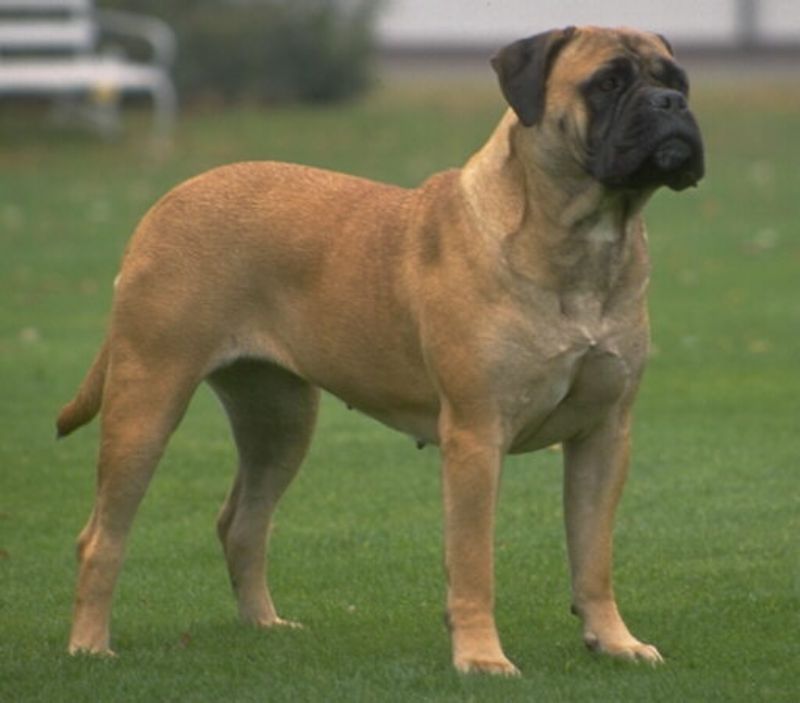
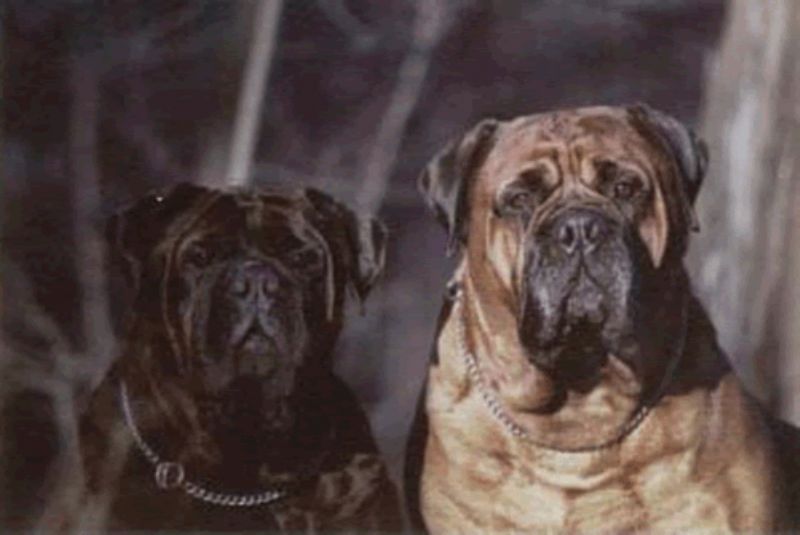
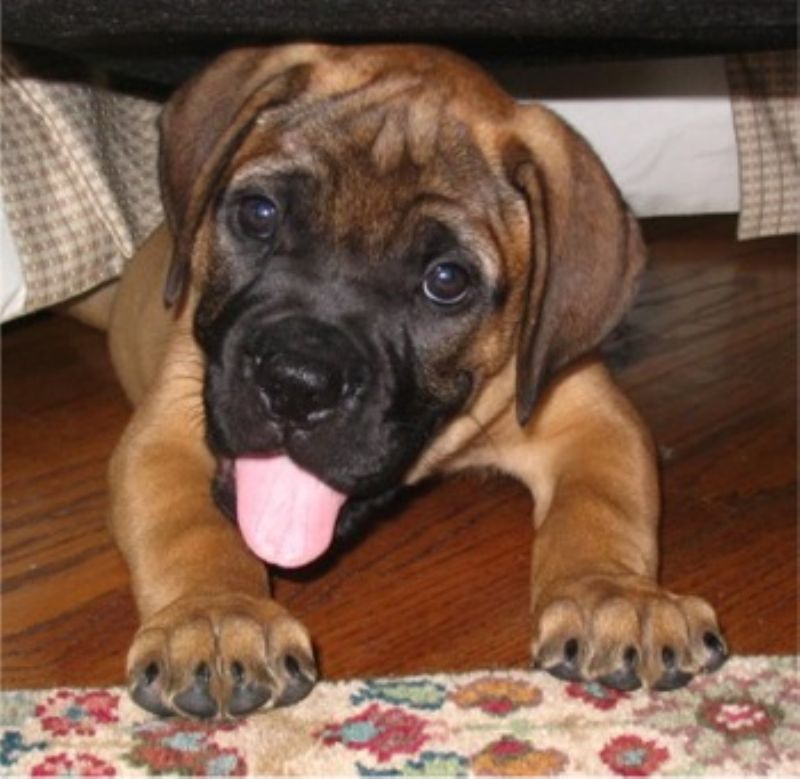
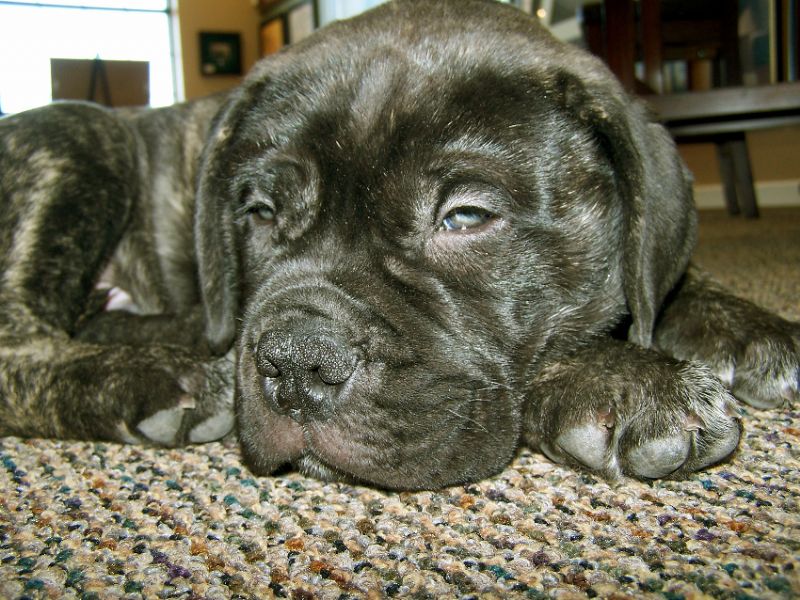
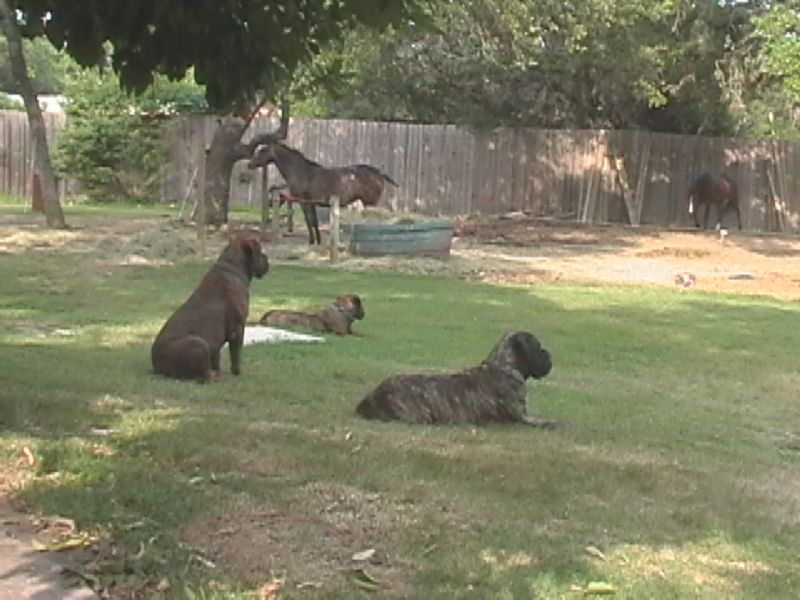
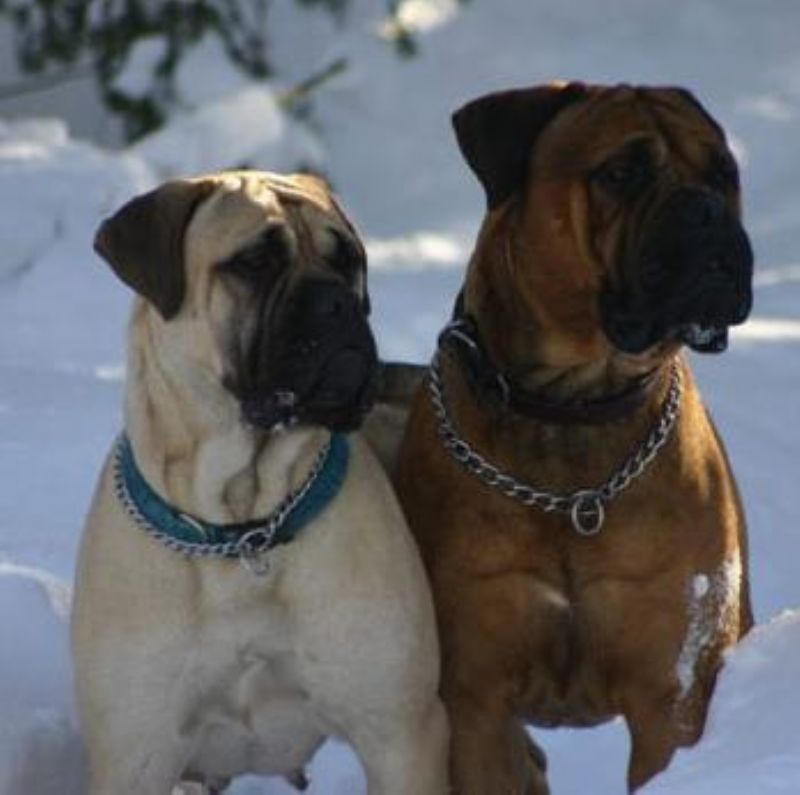
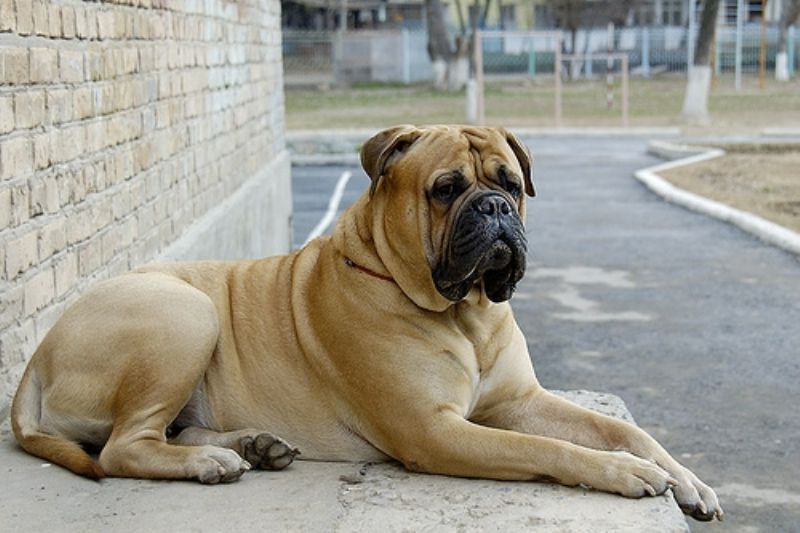
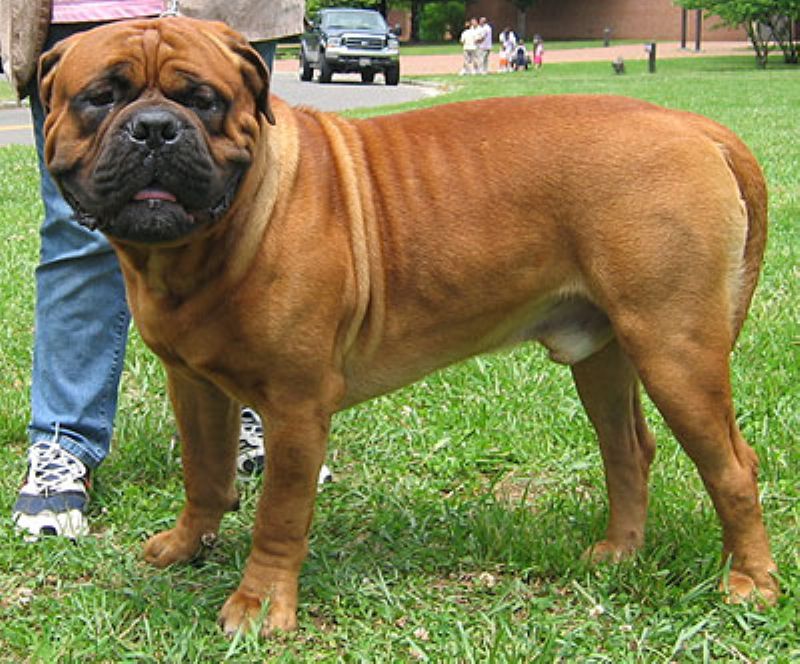
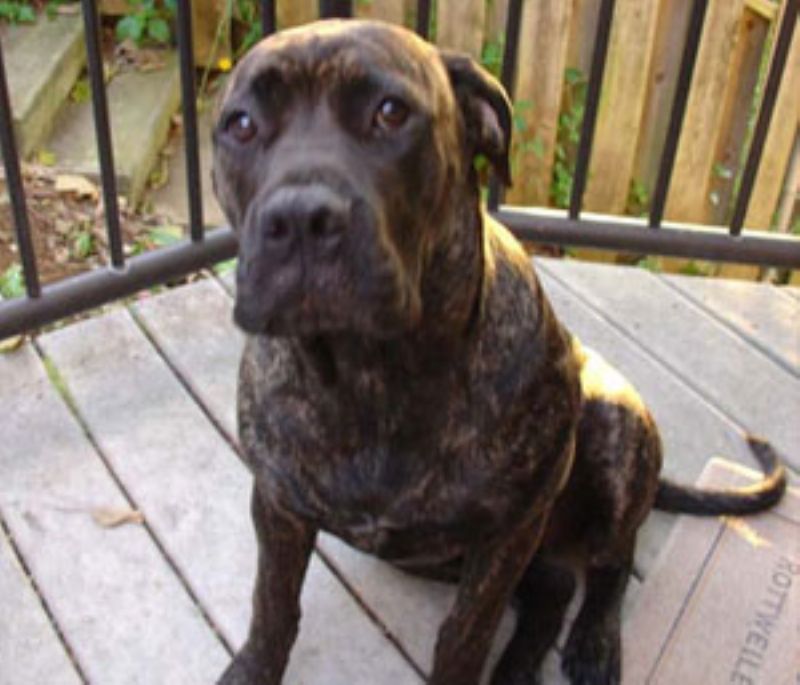
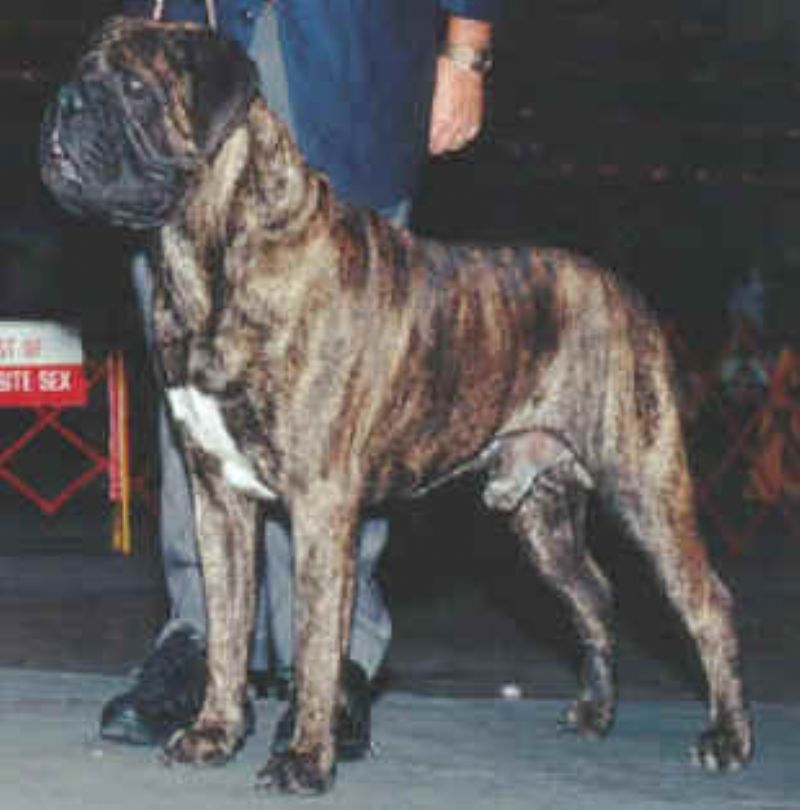
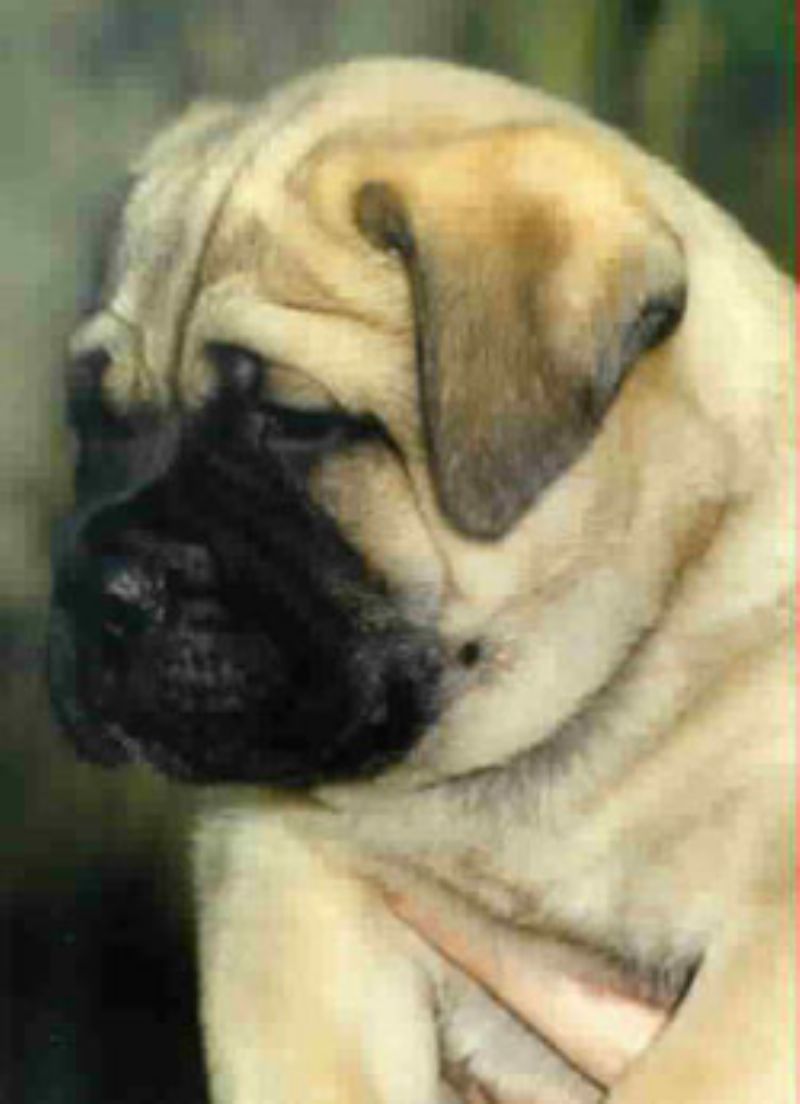
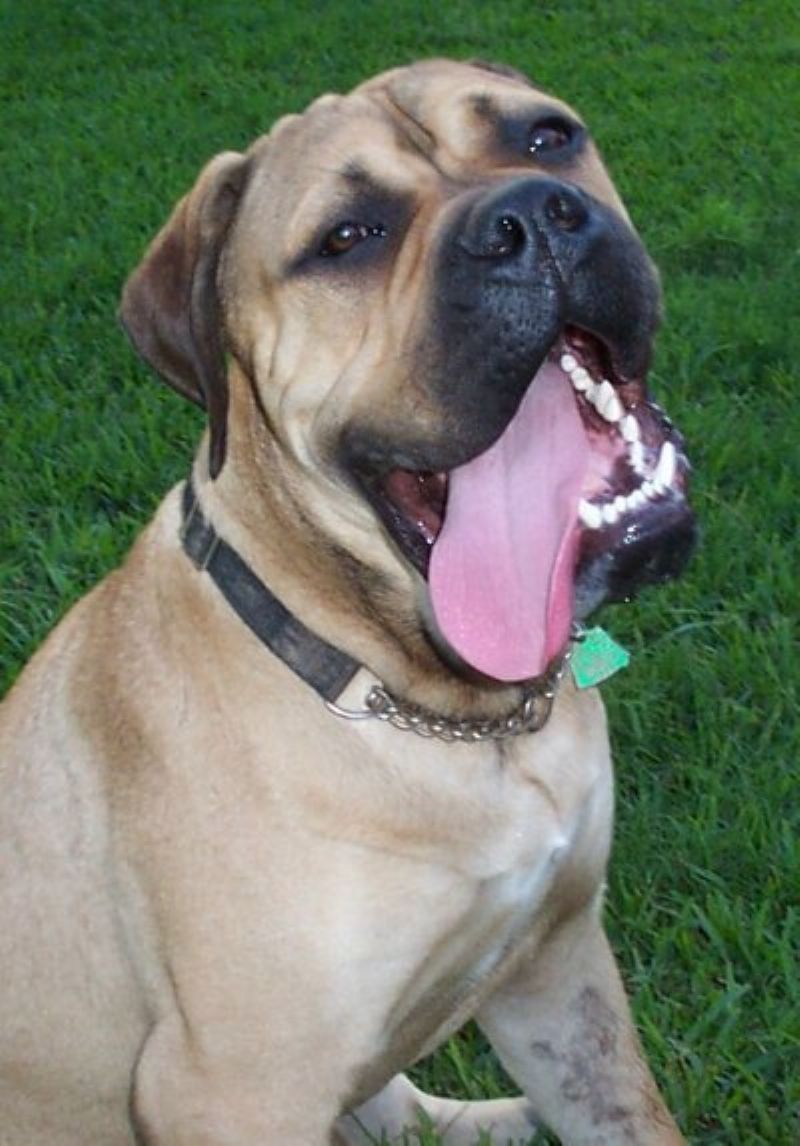
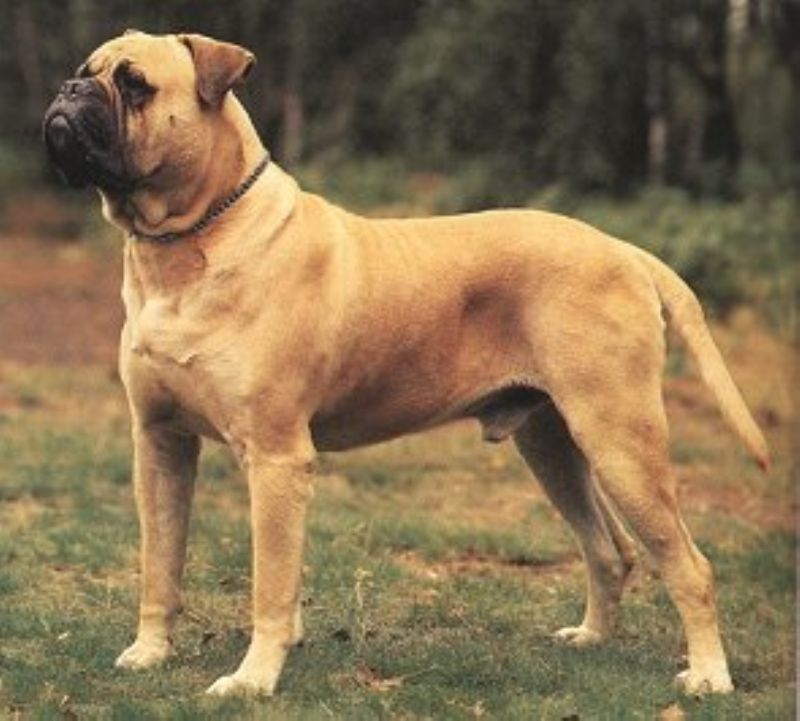
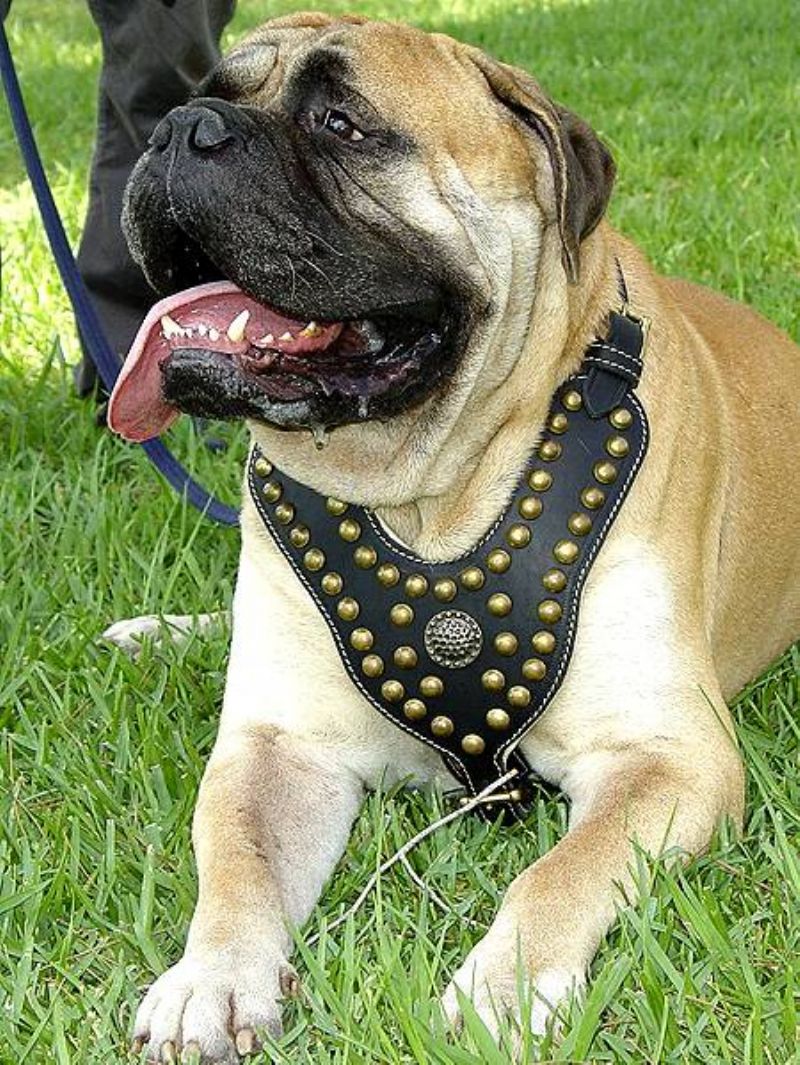
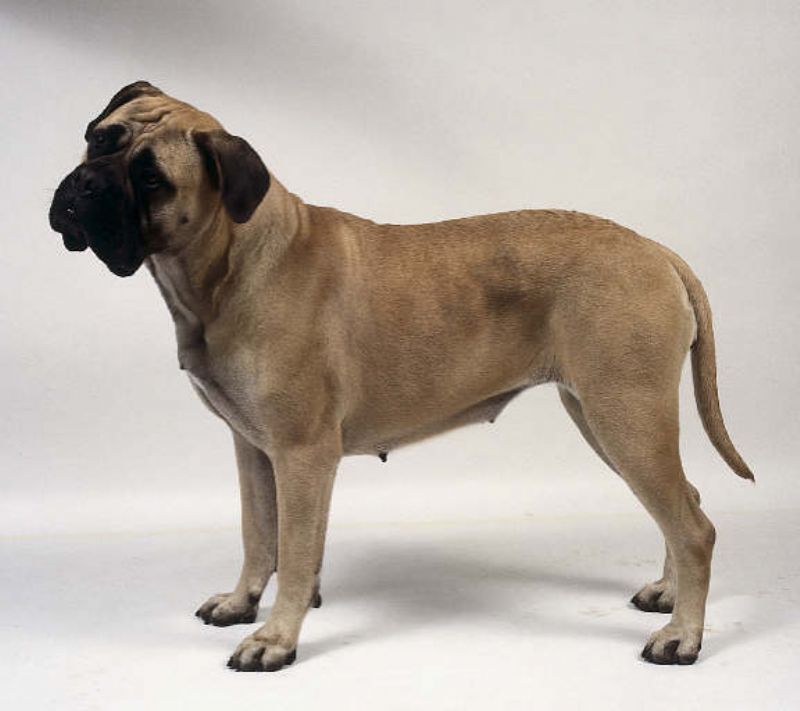
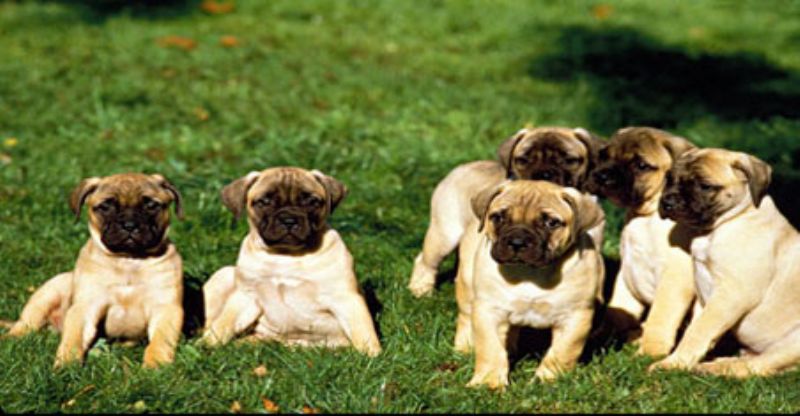
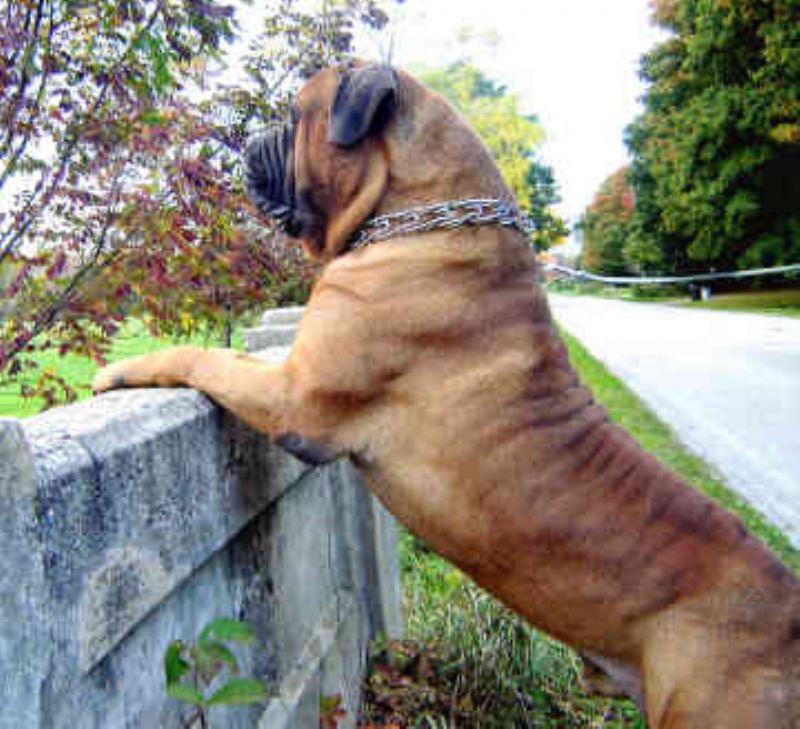
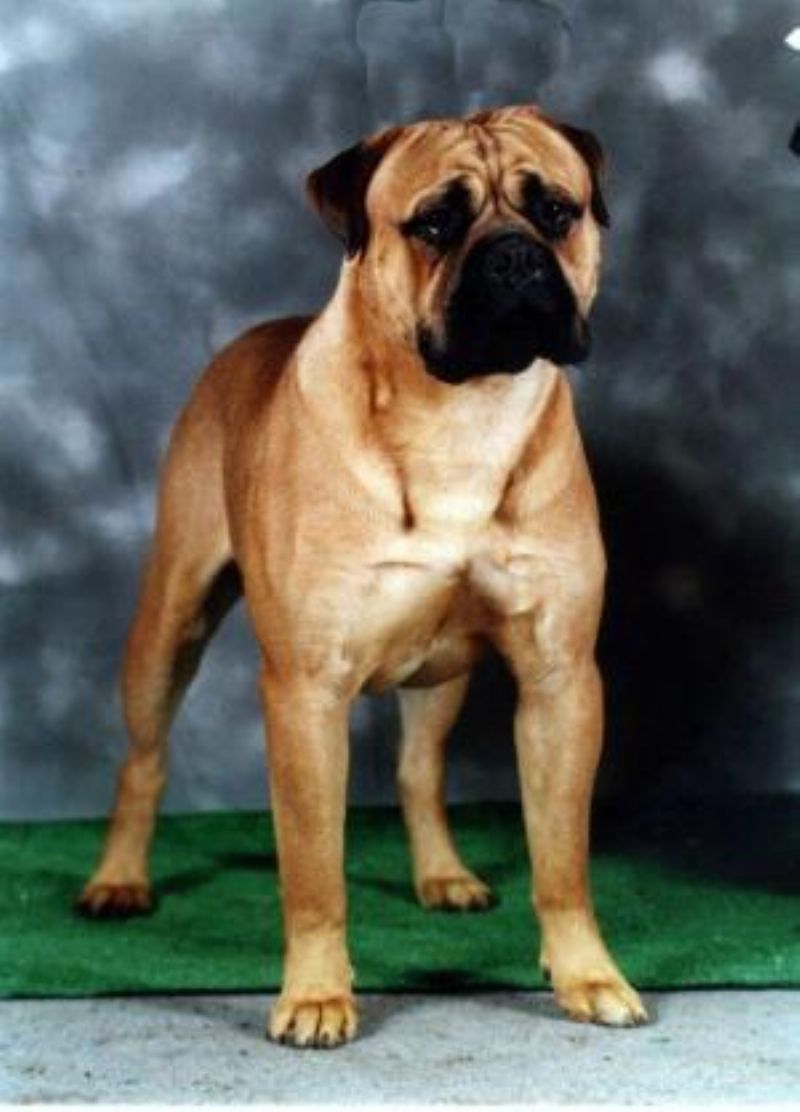
Bildene er lagt inn med tillatelse fra eiere. Mener du et bilde ligger her mot lov om opphavsrett ber vi deg kontakte oss snarest med informasjon om hvilke bilde det gjelder. Vi trenger bildenummeret. Dette finner du i teksten når du klikker på bildet. (F.eks. Bilde av Bullmastiff, nr 4384.)
Siden bildene ligger her med tillatelse, kan ikke bildene gjenbrukes andre steder. Det er derfor kopirettigheter på bildene.
Hver hund har sine særegenheter og personlighet. Om du har kjennskap til Bullmastiff kan du derfor ha noen andre erfaringer enn det som kommer frem her. Vi forsøker å beskrive de egenskapene hunden har basert på innspillene vi har fått, og kan kun bli bedre med dine tilbakemeldinger.
Finner du noe som bør endres, så ta kontakt med oss med riktig informasjon og vi skal forsøke å forbedre beskrivelsen.


